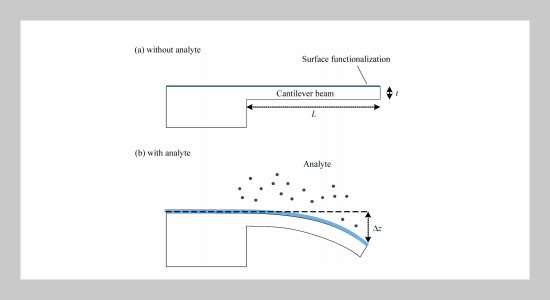Yen-I Chou This email address is being protected from spambots. You need JavaScript enabled to view it.1, Hsu-Cheng Chiang1 and Chi-Chuan Wang1 1Energy and Environment Laboratories, Industrial Technology Research Institute, Hsinchu, Taiwan 310, R.O.C.
Received:
February 28, 2007
Accepted:
March 29, 2007
Publication Date:
June 1, 2007
Download Citation:
||https://doi.org/10.6180/jase.2007.10.2.12
In this study, a hydrogen sensor based on microcantilever with Pd surface functionalization was developed. Since the absorption-actuated cantilever suffers from the junction sliding between functionalization coating and cantilever surface, this work is focused on improving the adhesive properties between Pd and cantilever surface for efficient chemi/mechanical transduction. Experimental results revealed that sputtering deposition technique benefits the adhesion of Pd functionalization for superior hydrogen detections. Furthermore, a surface design via trench-modification is proposed to cantilever surface for interlocking the Pd functionalization with cantilever surface. With this surface design, the trenched-cantilever hydrogen sensor demonstrated the superior sensing characteristics with higher sensitivity and lower detection limit.ABSTRACT
Keywords:
Cantilever Sensor, Surface Design, Hydrogen Sensing, Pd
REFERENCES
















